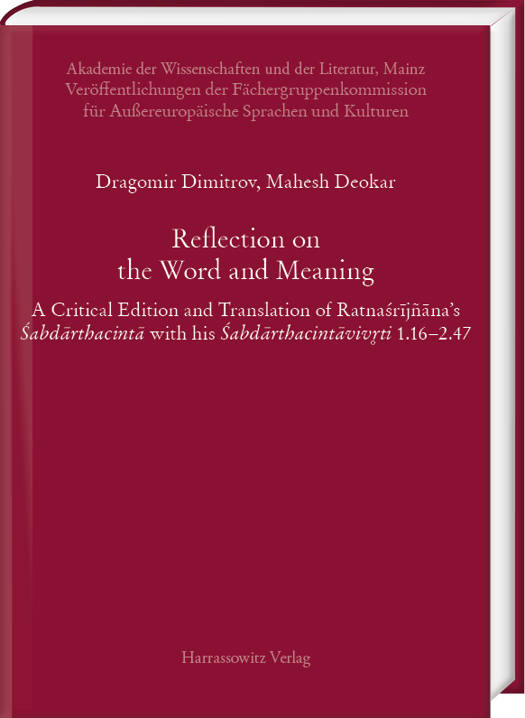
- Retrait gratuit dans votre magasin Club
- 7.000.000 titres dans notre catalogue
- Payer en toute sécurité
- Toujours un magasin près de chez vous
- Retrait gratuit dans votre magasin Club
- 7.000.0000 titres dans notre catalogue
- Payer en toute sécurité
- Toujours un magasin près de chez vous
Reflection on the Word and Meaning
A Critical Edition and Translation of Ratnasrijnana's Sabdarthacinta with His Sabdarthacintavivrti 1.16-2.47
Mahesh Deokar, Dragomir Dimitrov
76,95 €
+ 153 points
Description
The Sabdarthacinta or Reflection on the Word and Meaning represents a highly intriguing treatise on Sanskrit grammar. It was composed in the mid-10th century by Ratnasrijnana, a prodigious Sinhalese Buddhist scholar who went by the name of Ratnamati during his early career, before becoming known as Ratnasrijnana and still later as Upatissa. Despite Ratna's work occupying a central position in the Candra system of grammar, established by Candragomin (ca. 5th century AD), and exerting a significant influence on grammatical thought in South and Southeast Asia, it remained forgotten for many centuries. In order to rescue Ratna's "reflections" from oblivion, it was necessary to use the only surviving textual witness, a heavily damaged palm-leaf manuscript discovered in Nepal and kept in Calcutta for a long time. The text was recovered entirely with the help of Ratna's own commentary called the Sabdarthacintavivrti and Dhammasenapati's Karika (ca. 12th century) which was found to contain an unacknowledged, very precise Pali translation of the Sanskrit text. Besides the editio princeps of the Sabdarthacinta printed in Latin script, Dragomir Dimitrov and Mahesh Deokar present the first critical edition and an English translation of the surviving part of Ratna's autocommentary (Sabdarthacintavivrti 1.16-2.47), an English rendering of the main treatise as well as two appendices with the Sabdarthacinta typeset in Devanagari script and a facsimile edition with a diplomatic transcript of the Sabdarthacintavivrti. Now that Ratna's magnificent contribution to Indian grammar has risen like a phoenix from the ashes, no serious student of Sanskrit and Pali grammar should ignore it.
Spécifications
Parties prenantes
- Auteur(s) :
- Editeur:
Contenu
- Nombre de pages :
- 392
- Langue:
- Anglais
- Collection :
- Tome:
- n° 11
Caractéristiques
- EAN:
- 9783447123525
- Date de parution :
- 16-04-25
- Format:
- Livre relié
- Format numérique:
- Genaaid
- Dimensions :
- 145 mm x 220 mm
- Poids :
- 521 g

Les avis
Nous publions uniquement les avis qui respectent les conditions requises. Consultez nos conditions pour les avis.






